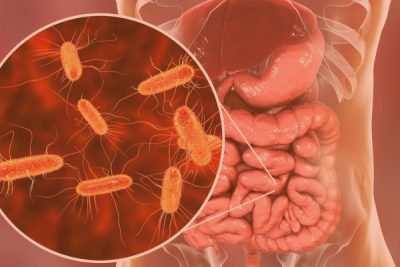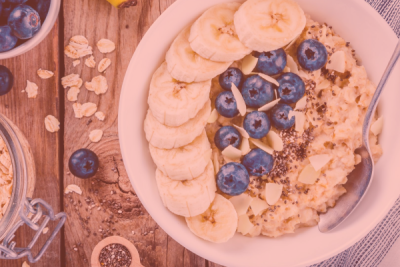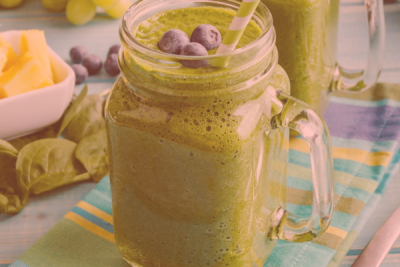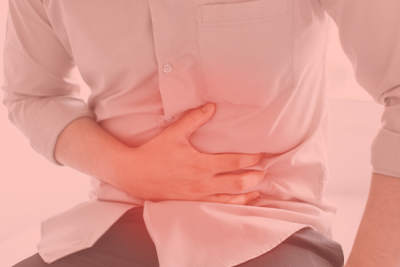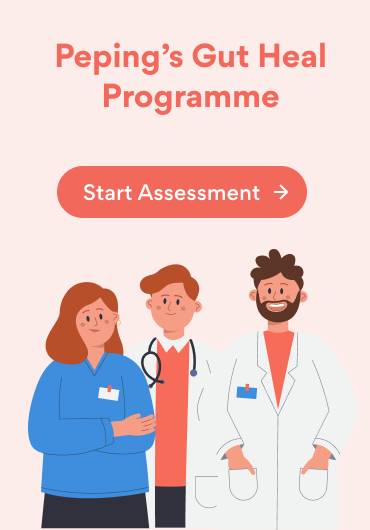Both healthy bacteria and pathogenic bacteria can be found in the digestive tract. When there is harmony in the gastrointestinal tract, we ought to have a plethora of beneficial gut bacteria. It is possible for a variety of health problems to arise as a consequence of the proliferation of pathogenic microorganisms.
Some of these health problems, such as inflammatory bowel disease and irritable bowel syndrome, seem to be fairly self-explanatory. Some conditions, such as autoimmune disorders and flare-ups of Hashimoto’s disease, appear in a more subtle but no less problematic manner than others.
Indications that the bacteria in your stomach are out of sync
It is completely common to have sporadic bouts of intestinal distress. For instance, there are instances when we either eat too much, consume something that is not fully cooked or catch a gastrointestinal infection. However, if digestive problems continue after receiving basic medical attention or the occasional round of antibiotics (for conditions such as traveler’s diarrhea), this may be an indication of an imbalance in the stomach.
You may have an excess of dangerous gut bacteria if you exhibit some or all of the following signs:
- Frequent bouts of diarrhea, constipation, or gas, as well as occurrences of loose or mucous-filled stools
- Constant bouts of sickness, throwing up, and bloating
- Persistent tiredness
- Unreasonable loss or gain in weight
- Problems with the blood sugar
- Deficiencies in nutritional intake
- Frequent manifestations of autoimmune disease
- A persistent desire to eat
- Problems with the skin
- Allergies
- Constant instances of headaches and migraines
6 reasons why your gut is out of balance
- Discomfort in the Digestive Tract
There is a chance that you will experience constipation, bloating, gas, stomach cramps, acid reflux, or heartburn. On the other hand, they are signs of an imbalance in the gut. A digestive tract that is strong and healthy will have an easier time breaking down food and getting rid of waste.
- An Unanticipated Shift in Weight
Whether you are gaining or losing weight without making any changes to your food or exercise routine, this could be a sign of an unhealthy gut. When the gut’s microbiome is out of whack, the body may have difficulties absorbing nutrients, controlling blood sugar, sending the message that it’s full, and accumulating fat. Obesity, which can lead to even more serious health concerns like heart disease and diabetes, can be a forerunner to a lack of variety in the gut microbiome, which can be a cause of that obesity.
- Constant Expenditure of Energy
If you are constantly exhausted, even at the start of the day, this could be a sign that something is wrong with your digestive system. There has been a direct correlation established between a low diversity of gut bacteria and low levels of energy, persistent weariness, and sleep disorders such as insomnia and restless sleep.
The digestive tract is where serotonin, a hormone that influences both sleep and mood, is created. If your gut isn’t working properly, it can have trouble creating or regulating serotonin, which can make it difficult for you to have a decent night’s sleep and keep you from feeling rested the next day.
- Skin Conditions
Even the skin can be affected by issues in the digestive tract. Inflammation in the digestive tract brought on by food allergies, an unhealthy diet, or a shortage of beneficial gut bacteria has been related to a number of skin conditions, including acne and eczema. It can wreak havoc on your skin if the gut is out of balance and contains a greater number of bacteria that are toxic than those that are beneficial.
- Reactions to certain foods
Many people automatically associate food allergies with the phrase “food intolerance” when they hear it. However, just because a specific kind of food, such as dairy products or wheat, makes your stomach unhappy, this does not necessarily suggest that you have a real allergy or even an intolerance to that food.
There is a good chance that the composition of the microbiome in your gut is imbalanced, which is the cause of the stomachache that particular food is giving you. It’s possible that your digestive tract is lacking some of the beneficial bacteria that are essential for properly breaking down specific foods.
- Alterations in Mood
It has been demonstrated that the stomach exerts such a significant amount of influence over the functions of the body that it is frequently referred to as the “second brain.” Research continues to show that the condition of your gut is linked to a variety of mental and emotional health issues, including anxiety, despair, irritability, and mood swings. The presence of beneficial bacteria in the stomach aids in the creation of essential chemicals that enhance mood, such as dopamine and serotonin, and also help to regulate their levels.
How to starve harmful gut bacteria
If you experience any of the symptoms described above, it is possible that the microbiome in your stomach is out of whack. When pathogenic or opportunistic bacteria like staphylococcus, clostridium perfringens, E. coli, and streptococcus are allowed to thrive, it can lead to a reduction in the number of beneficial bacteria that are present in your body. Beneficial bacteria help boost your immune system, break down food, and produce vitamins.
The following are some of the methods by which you can starve harmful bacteria in your gut and assist restore balance:
- Consume some probiotics: You can begin to shift the balance toward a more beneficial population of bacteria in your gut by eating foods that contain beneficial bacteria. Fermented foods and beverages can include living cultures of beneficial bacteria and yeasts that are known as probiotics. The majority of the time, foods and supplements that include Lactobacillus and Saccharomyces boulardii are the ones that prove to be the most beneficial.
- Get rid of the sugar: Sugar is the most favorable source of low-cost energy for harmful bacteria, which are always on the lookout for it. The fuel that bad bacteria prefer to use to help them proliferate is sugar, which comes from processed foods, low-nutrient carbs, conventional dairy, alcohol, and even fructose in fruit.
- Take in some water: It should go without saying at this point, but drinking water rather than other beverages is essential for maintaining healthy gut function. Drinking water regularly can assist maintain waste flowing through the digestive tract and, as a result, prevent constipation. In addition to this, it is free of potentially harmful substances like lactose and sugar and works to maintain the mucosal lining of the digestive tract.
- Steer clear of meals that irritate you: Intolerance to certain foods is typically an indication that the diet you are following is upsetting the environment in your stomach. It is essential to avoid the foods that cause problems since food sensitivities can irritate the lining of your stomach and encourage the growth of bacteria that are hazardous to your health. Following a stringent elimination diet like the autoimmune protocol diet is the most effective method for determining whether or not a person has a food intolerance or sensitivity.
- Feed the beneficial microorganisms in your gut: The scales will swing in favor of your beneficial bacteria (and your own health) if you provide them with the items that are essential to their growth, such as unprocessed meals and fiber. Because human systems are unable to break down fiber, it serves as the primary source of nutrition for the organisms. Nuts, root vegetables, and cruciferous vegetables, when consumed in the appropriate amounts, are all excellent providers of fiber.
An example plan for starving bad gut bacteria
What to do before starting the reset?
It is important to have a game plan in place before beginning a gut reset program that lasts for three days. It is common for gut resets to necessitate dramatic and unexpected shifts in one’s diet; therefore, it can be helpful for an individual to prepare by doing the following:
- cleaning out the pantry and the refrigerator of any foods that they are making an effort to avoid eating
- making plans for the next three days’ worth of meals
- preparing a shopping list and then going out to buy the necessary ingredients in advance
- preparing dishes in advance by either freezing them or creating them.
- ensuring that they have enough time throughout the day to cook prepared meals, engage in physical activity, and relax
First day
Consume foods that can help reduce inflammation: The first day of a gut reset focuses on removing inflammatory foods and drinks from the diet in order to establish a healthy baseline. These include the following:
- Sugars that are added to foods, such as table sugar, corn syrup, or compounds whose names end in “-ose” (such as fructose), are examples of added sugars.
- Foods that are high in refined carbs include things like spaghetti, pizza dough, cakes, and pastries.
- Meals that are high in saturated fat, including processed meats and fried dishes
Instead, a person should focus on eating enough fresh fruits and vegetables as well as healthy fats such as:
- Vegetables with dark green leaves, such as spinach and kale
- Vegetables with vibrant hues, such as red bell peppers, orange carrots, and eggplant
- Fruits like berries, apples, and avocados that are lower in sugar content are good options.
- Olive oil
- Protein sources low in fat like fatty seafood
The energy that is released more slowly throughout the day can be provided by complex carbs. A person can experiment with foods like brown rice, quinoa, oats, or sweet potatoes by consuming moderate portions of them.
Keep yourself hydrated: Consuming an adequate amount of water is necessary for the body to function properly. The color of a person’s urine, which should be the color of light straw, is a good indicator of how much water that person is taking in on a daily basis.
During the reset of the gut, it is preferable to abstain from caffeinated beverages and alcoholic beverages, and instead drink water or herbal teas, such as those made from chamomile, peppermint, or fennel.
Get the amount of rest you need: There is some data that suggests sleep can have an effect, not just on cognitive function, but also on the microbiota. A person can try their hand at setting a regular time for sleeping and waking up, as well as taking some time in the evening to unwind and relax.
The second day
Include additional foods that are high in fiber: Increasing the amount of high-fiber meals consumed on a regular basis can provide healthy gut bacteria with more food to consume. The following are some examples of foods that are high in fiber:
- uncooked foods like salads and veggies
- juices or smoothies made from greens
- a powder made from flaxseeds
- legumes both beans and lentils
If you suddenly increase the amount of fiber you consume, you may experience some temporary bloating and gas. In the event that this happens, the diet should be adhered to from the very first day.
Exercise on a consistent basis: Exercise may have a favorable influence on the microbiome variety. Stress relief and weight control are two additional benefits that can be gained from engaging in regular physical activity. Beginning with low-intensity physical activity is recommended. One could give it a shot by:
- walking
- yoga
- pilates
- the practice of tai chi
The Third day
Test out some fermented foods: Probiotics are live microorganisms, and fermented foods are where you can find them. People can incorporate the following into their diet:
- sauerkraut
- kimchi
- miso
- tempeh
- kefir
Probiotics, much like diets high in fiber, are known to have the potential to cause adverse effects such as bloating and gas. After a couple of days, this might get better on its own. If it does not, the individual may wish to cut back on the amount of fermented foods they eat or stop eating them completely.
Practice several methods of relaxing: The gut is impacted by stress in a variety of different ways. Stress, among other things, can:
- change the rate at which digestion occurs
- the sensitivity of the intestines should be increased.
- enhance the level of intestinal permeability
- intestinal bacteria can be adversely affected.
A person may have the option to make relaxation part of their everyday habit if they choose to go on a gut reset for three days. This may entail the following:
- exercising mindfulness through meditation or other practices
- soaking in a soothing hot tub
- receiving a massage or performing a massage on oneself
When the three days are up, an individual may want to think about whether or not they want to continue any or all of these habits for the long-term benefits they provide.
Takeaway
As a means of moving to a healthier diet or way of life, it’s possible that a gut reset over the course of three days may be useful. On the other hand, there is a dearth of evidence to back up the idea that it can bring about a significant shift in a person’s microbiome or general health within a span of three days.
Alterations to a person’s diet that are made over a longer period of time may have a beneficial effect on the person’s gut health as well as on certain chronic health disorders. Consult a medical professional or a dietitian for advice on the most effective way to handle this situation.



